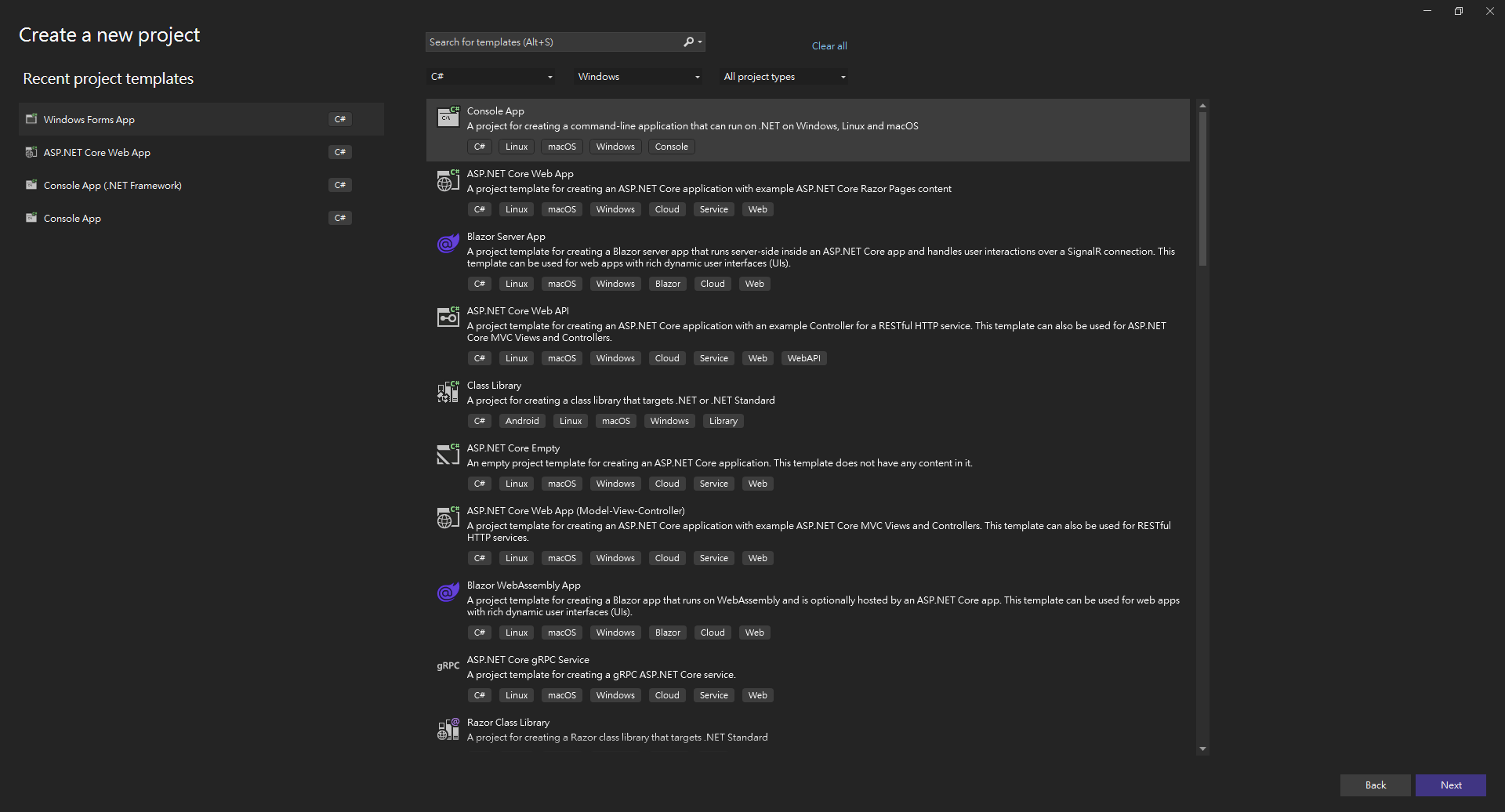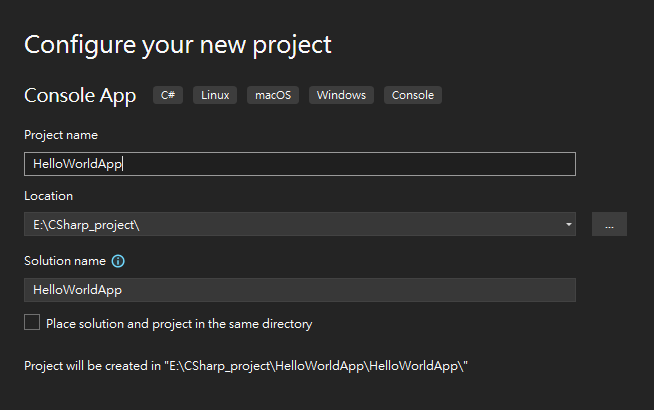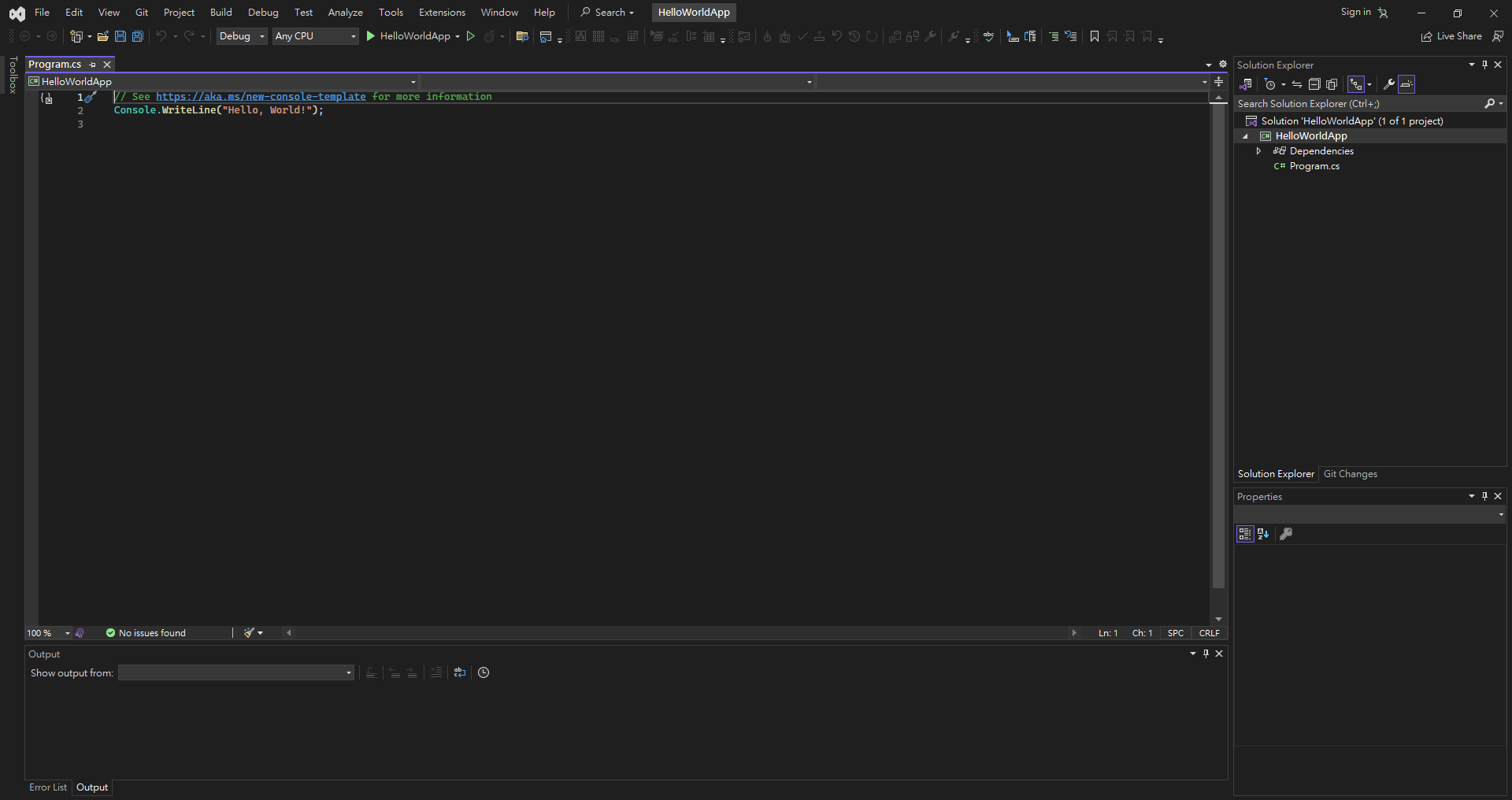This is my first day of self-learning C#.
Although I had learned this programming language in the past when I was still a student in collega, I am not familiar with using C# to build up a actual project!
My target is to become a back-end programmer or a full-stack programmer, so I am going to create a web project by using C# for back-end development and using React.js for frontend.
Before starting, I asked chatGPT for some suggestions.
-
Learn the Basics of C#:
- Familiarize yourself with the basic syntax, data types, control structures (if statements, loops), and object-oriented programming (OOP) concepts.
- There are many online resources for learning C#. You can use platforms like Codecademy, Udemy, or free resources like Microsoft’s official documentation and tutorials.
-
Understand Object-Oriented Programming (OOP):
- Learn about classes, objects, inheritance, encapsulation, and polymorphism. These are fundamental concepts in C# and OOP in general.
-
Explore C# Advanced Concepts:
- Dive deeper into advanced C# features such as LINQ (Language Integrated Query), asynchronous programming with async/await, and generics.
-
Build Console Applications:
- Practice your C# skills by building simple console applications. This will help you understand how to structure your code and solve problems using C#.
-
Learn about .NET Framework and .NET Core:
- C# is often used with the .NET framework. Understand the basics of .NET and the newer .NET Core. .NET Core is now the recommended platform for new projects.
-
Introduction to Web Development:
- Familiarize yourself with basic web development concepts. Understand HTML, CSS, and JavaScript. Since you’ll be using React.js, focus on building a strong foundation in JavaScript.
-
Learn React.js:
- Start with the official React.js documentation. There are also many online courses and tutorials available on platforms like freeCodeCamp, Codecademy, and Udemy.
-
Build Simple React Applications:
- Create simple React applications to practice your skills. Understand components, state, props, and the React lifecycle.
-
Connect React with a Backend:
- Learn how to connect your React frontend with a backend built in C#. This involves making HTTP requests from your React application to the C# backend.
-
Understand RESTful APIs:
- Learn about designing and implementing RESTful APIs using C# and ASP.NET Core. This will be crucial for communication between your frontend and backend.
-
Database Integration:
- Explore database integration with C#. Understand how to use technologies like Entity Framework Core to interact with databases.
-
Build Full-Stack Projects:
- Once you’re comfortable with both C# and React, start building full-stack projects. This will help you apply your knowledge and gain practical experience.
-
Continuous Learning:
- Stay updated with the latest developments in C# and React.js. Follow blogs, participate in forums, and explore advanced topics as your skills progress.
So, let us start with a small “Hello world” console app project for a warm up first.
Open Visual Studio > Create new project > Console app

Set project name & location

Let’s use .Net framework version 6.0 for this time.

Boom!! We created a project.

Let’s type some simple code on it.
Just simply put my name and the current datetime on it.
Run.

Here we go.
